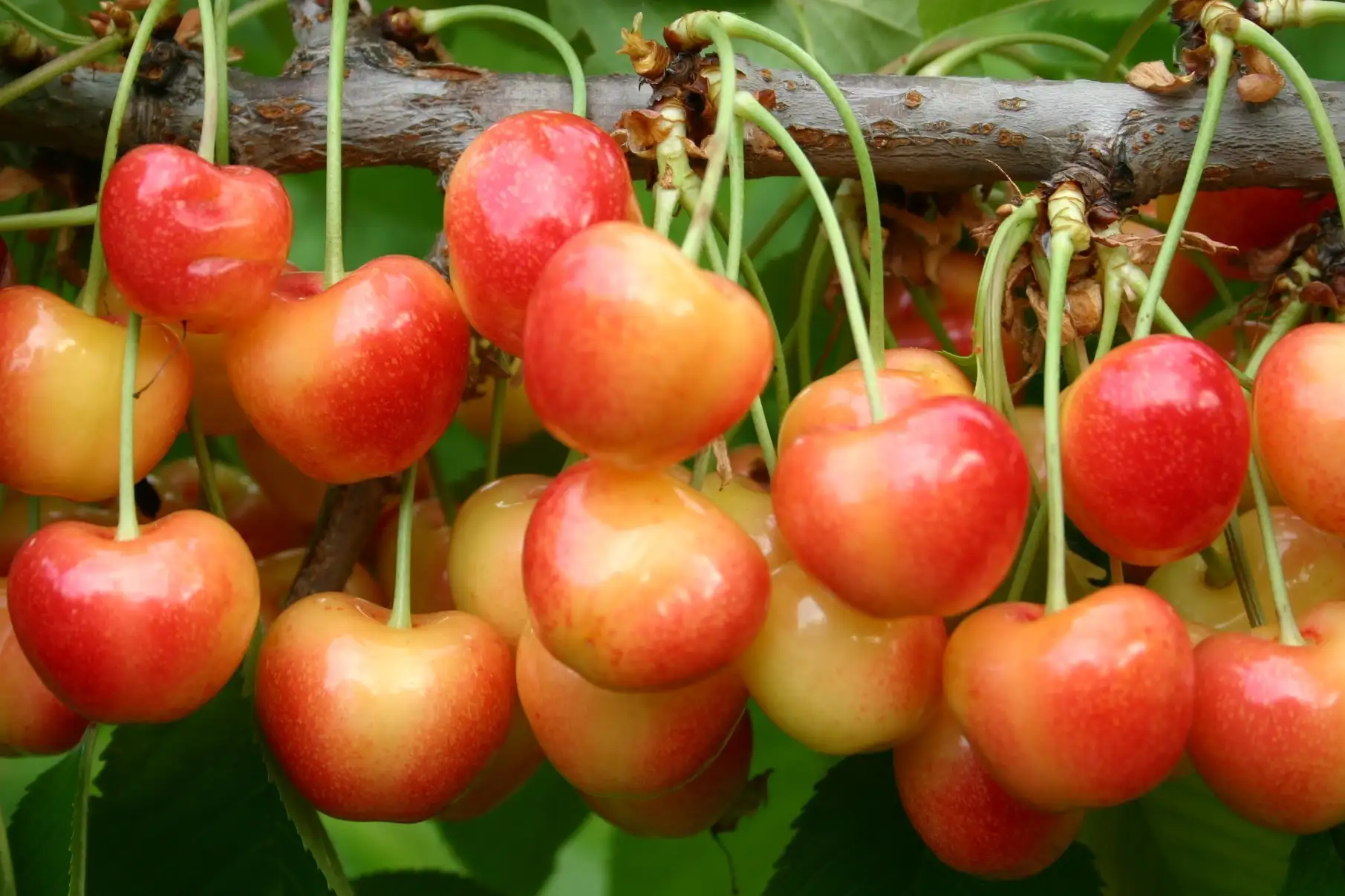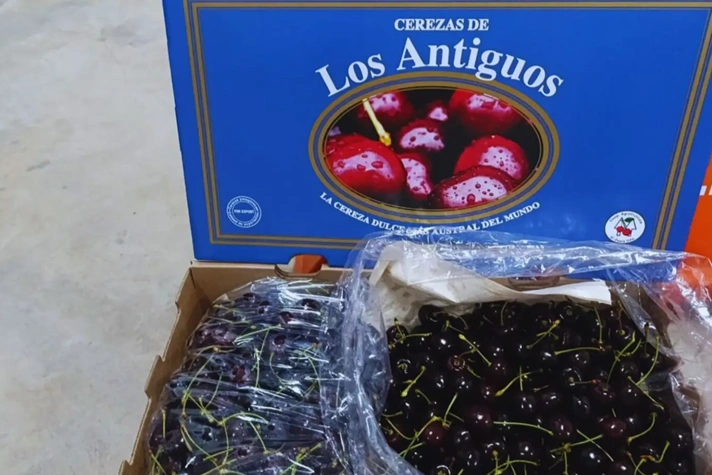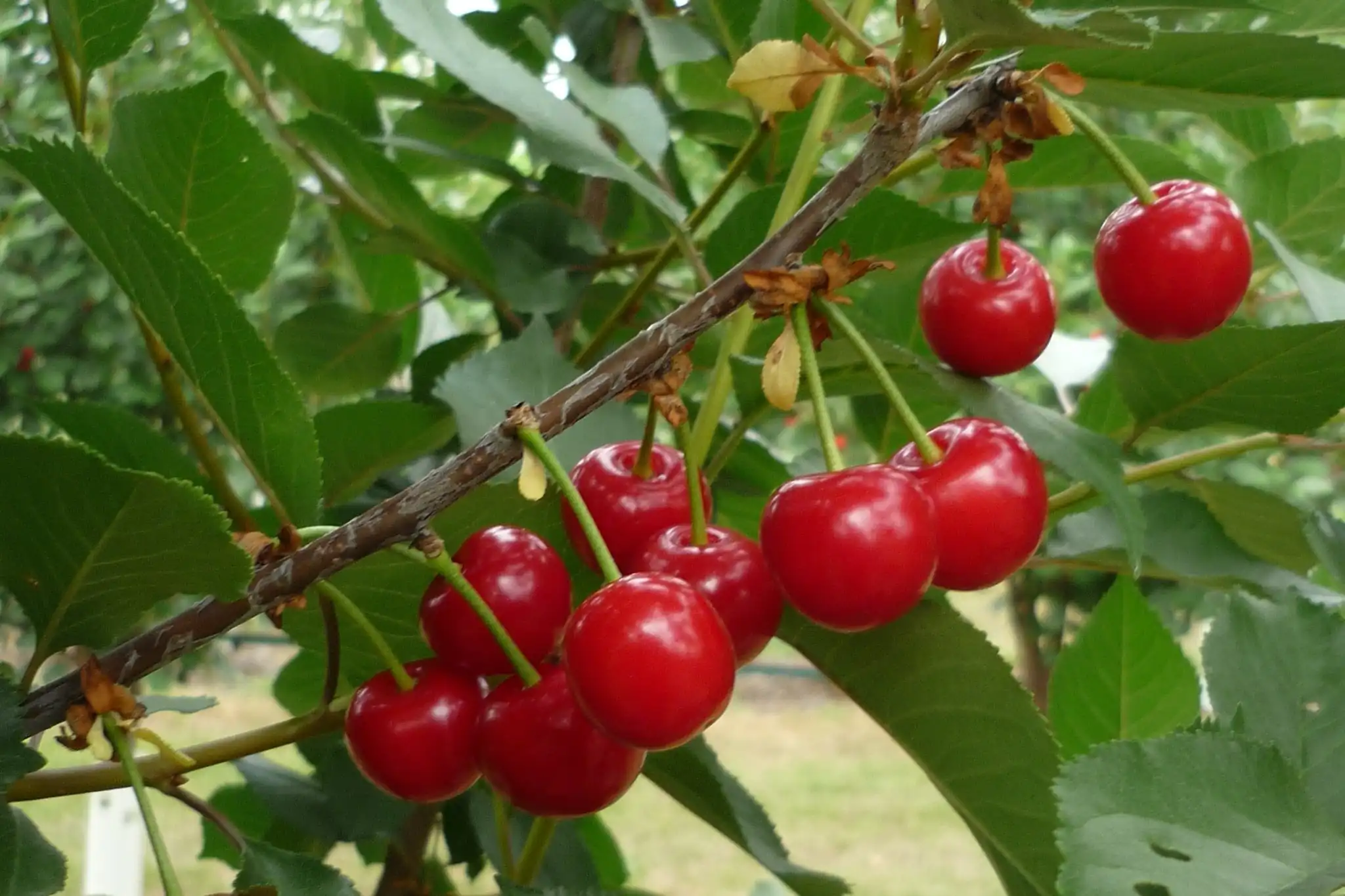A recent study conducted by a team of Chinese researchers has identified and characterized a new gene belonging to the UDP-glycosyltransferase (UGT) family in sweet cherry, named PavUGT48. The enzyme it encodes exhibits a dual metabolic function, participating both in the biosynthesis of anthocyanins, responsible for the red coloration of the fruit, and in the formation of amygdalin, a compound typical of stone fruit species.
The results provide promising prospects for the genetic and qualitative improvement of sweet cherries, thanks to the potential use of molecular markers in the selection of new varieties with enhanced aesthetic and nutritional quality.
UGTs are essential enzymes in fruit development and ripening, as they catalyze the transfer of sugars to numerous secondary metabolites, altering their solubility, stability, and biological activity. In sweet cherry, UGTs had previously been primarily associated with fruit coloration through the glycosylation of anthocyanidins.
However, this study identified a new UGT with a broader and more complex role.

Transcriptomic analysis and gene expression
Through transcriptomic analysis of bicolored fruits (half red and half green) from the cultivar “C1” (“Caihong” × “2121”), researchers identified a gene highly expressed in the red portion of the fruit, initially named FUN_010084 and later renamed PavUGT48.
A total of 187 UGT family genes were identified in the sweet cherry genome, but PavUGT48 stood out for its strong correlation with fruit coloration and its significant functional similarity to analogous enzymes in other fruit species.
Expression analyses showed that PavUGT48 expression progressively increased during fruit development in cultivars with different pigmentation levels (“Rainier”, “Lapins”, and “Bigarreau Dragon”), reaching its highest levels in mature fruits.
Functional assays and enzymatic activity
In vitro functional assays demonstrated that the enzyme catalyzes the conversion of cyanidin to cyanidin-3-O-glucoside using UDP-glucose as the sugar donor. This reaction underlies the formation of the bright red color characteristic of sweet cherries.
At the same time, PavUGT48 was able to convert prunasin into amygdalin, highlighting remarkable catalytic versatility. The reactions occurred efficiently under neutral or slightly alkaline conditions (pH 7–8), while no activity was observed under acidic conditions.
Additional transient expression experiments performed on fruits of the “Rainier” cultivar confirmed the gene’s biological role: overexpression of PavUGT48 enhanced fruit coloration and increased the levels of both cyanidin-3-O-glucoside and amygdalin, whereas silencing of the gene produced the opposite effect.
Implications and future applications
These findings indicate that the enzyme plays a direct role in controlling pigmentation and the metabolism of cyanogenic glycosides. The discovery of PavUGT48 offers exciting prospects for improving the quality of sweet cherries.
Modulating this gene’s activity could optimize fruit coloration, a key factor for market value, while also regulating the synthesis of secondary metabolites such as amygdalin, which influence the fruit’s biochemical and sensory profile.
Moreover, the identification of enzymes with dual catalytic specificity opens new avenues for breeding strategies aimed at developing cultivars with higher anthocyanin content or enhanced nutraceutical properties.
In conclusion, PavUGT48 represents the first documented case of a sweet cherry UDP-glycosyltransferase with dual activity on both anthocyanins and amygdalin, marking an important step forward in understanding the molecular mechanisms that regulate fruit coloration and quality.
Source: Feng, C., Guo, Q., Wu, C., Wang, J., Zhang, X., Yan, G., Zhou, Y., Wang, W., Xue, Z., Zhang, K., & Duan, X. (2025). Identification and characteristic analysis of PavUGT48 as a novel UDP- glycosyltransferase with dual functions on anthocyanin and amygdalin biosynthesis in sweet cherry. International Journal of Biological Macromolecules, 309, 143062. https://doi.org/10.1016/j.ijbiomac.2025.143062
Image source: SL Fruit Service
Andrea Giovannini
University of Bologna (IT)
Cherry Times - All rights reserved













